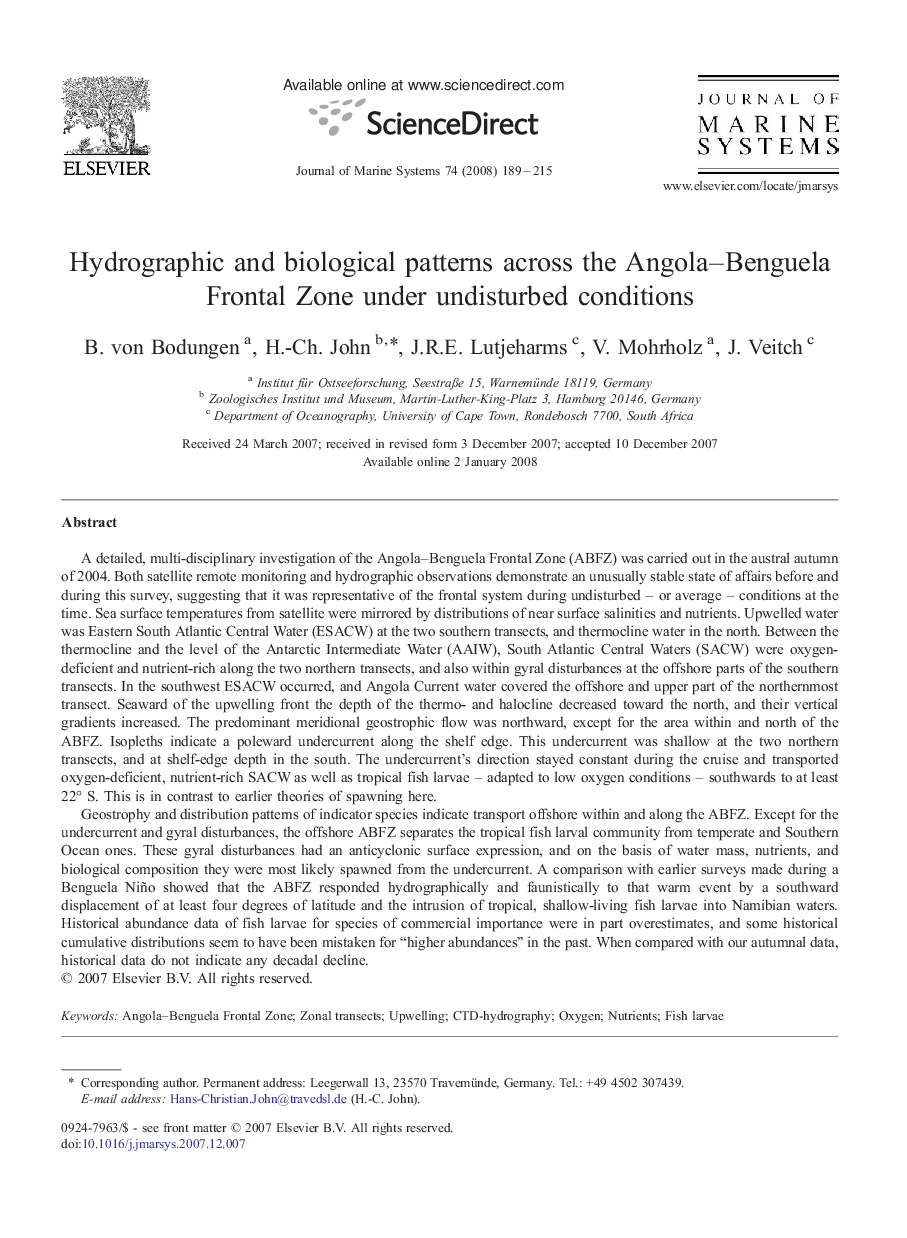| Article ID | Journal | Published Year | Pages | File Type |
|---|---|---|---|---|
| 4548996 | Journal of Marine Systems | 2008 | 27 Pages |
Abstract
Geostrophy and distribution patterns of indicator species indicate transport offshore within and along the ABFZ. Except for the undercurrent and gyral disturbances, the offshore ABFZ separates the tropical fish larval community from temperate and Southern Ocean ones. These gyral disturbances had an anticyclonic surface expression, and on the basis of water mass, nutrients, and biological composition they were most likely spawned from the undercurrent. A comparison with earlier surveys made during a Benguela Niño showed that the ABFZ responded hydrographically and faunistically to that warm event by a southward displacement of at least four degrees of latitude and the intrusion of tropical, shallow-living fish larvae into Namibian waters. Historical abundance data of fish larvae for species of commercial importance were in part overestimates, and some historical cumulative distributions seem to have been mistaken for “higher abundances” in the past. When compared with our autumnal data, historical data do not indicate any decadal decline.
Keywords
Related Topics
Physical Sciences and Engineering
Earth and Planetary Sciences
Oceanography
Authors
B. von Bodungen, H.-Ch. John, J.R.E. Lutjeharms, V. Mohrholz, J. Veitch,
